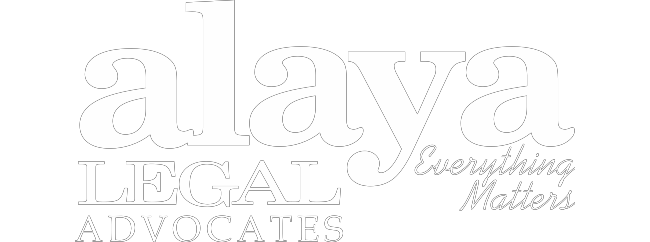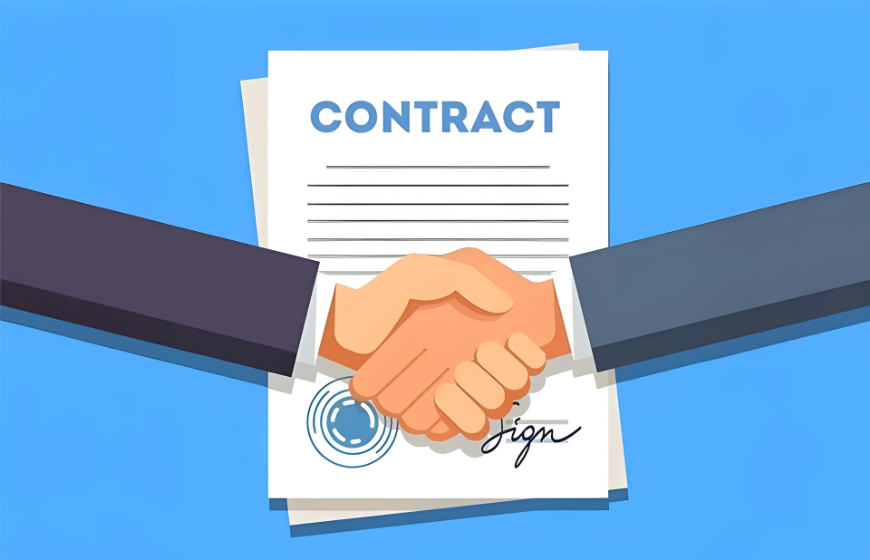Designed by Freepik
|
Reference Date | Version |
September 11, 2025 | 1.0 |
|
Keywords |
Contract damages, liquidated damages, indemnity, limitation of liability, Section 73, Section 74, Sections 124–125, mitigation, foreseeability, legal injury, drafting tips, commercial contracts, India |
|
Legislation(s)/Policies |
(i) The Indian Contract Act, 1872 |
|
Jurisdiction |
India |
Contracts routinely try to fix commercial risk in advance, but lost remedies often come down to wording. The law on claimable losses is a core pillar of commercial contracting in India. This article explains how damages, liquidated damages and indemnities interact to determine what losses are recoverable, and where courts draw the line between compensation and penalty. It also highlights concise drafting steps to keep your remedies enforceable.
As commercial transactions become more complex, allocating and quantifying risk through contractual clauses calls for both legal and commercial judgment. Careful drafting backed by legal advice is essential to design enforceable liquidated-damage provisions, precise indemnities, and sensible limitation caps that preserve remedies without exposing parties to unintended liabilities.
- Introduction
In commercial transactions, disputes over losses claimed for breach of contract are among the most frequent and contentious. Parties often assume that every financial setback following a breach is recoverable. However, Indian law draws clear boundaries around what losses may be claimed, how they must be quantified, and the extent to which contracts can pre-determine compensation.
Sections 73 and 74 of the Indian Contract Act, 1872 (‘Contract Act’), lay down the principles governing damages and liquidated damages (LD), while Sections 124 and 125 deal with contracts for indemnity. Judicial interpretation over the years has clarified that losses must either arise naturally from the breach or be within the contemplation of the parties at the time of contracting. LDs are not automatically payable unless they represent a genuine pre-estimate of loss. Moreover, courts have clarified that said Section 74 does not generally dispense with the requirement of showing a legal injury; except where quantification is inherently difficult, the claimant must still demonstrate that some loss has in fact been suffered. Indemnity, on the other hand, is not restricted to losses arising from breach of contract. It is a contractual promise to shift risk allocation between the parties, and it operates even when no breach has occurred.
In practice, disputes often arise around three recurring fault lines: damages inflated beyond what the law permits, indemnity clauses added as afterthoughts (and then misunderstood in enforcement), and LD provisions struck down or pared back for failing the test of reasonable compensation and causation. This article examines the Indian legal position on claimable losses, reviews the evolving jurisprudence, and highlights practical considerations for drafting damages and indemnity clauses and provisions in commercial contracts.
- Recoverable damages in contract disputes
Section 73 of the Contract Act provides that when a contract is broken, the party who suffers on account of such breach is entitled to receive compensation for any loss or damage caused to him thereby, which:
- Naturally arose in the usual course of things from such a breach, or
- Which the parties knew, when they made the contract, to be likely to result from the breach.
The injured party is required to take “all reasonable steps” to reduce the loss. The law “debars him from claiming any part of the damage which is due to his neglect to take such steps.” The objective is to put the claimant, “as far as money can do it, in as good a situation as if the contract had been performed,” but not to allow a windfall. The Section also makes clear that compensation is not to be granted for remote or indirect loss or damage sustained because of the breach.
The judicial pronouncements have consistently emphasised three factors: foreseeability, causation and reasonable mitigation. In Karsandas H. Thacker v. Saran Engineering Co. Ltd. (MANU/SC/0381/1965), the Supreme Court held, “The appellant, on the breach of contract by the respondent, was entitled, under Section 73 of the Contract Act, to receive compensation for any loss by the damage caused to him which naturally arose in the usual course of business from such breach or which the parties knew when they made the contract to be likely to result from the breach of it. Under Section 73 of the Contract Act, such compensation is not to be given for any remote and indirect loss or damage sustained by reason of the breach… The person committing breach of contract has to pay to the other party the difference between the contract price of the articles agreed to be sold and the sum paid by the other party for purchasing another article on account of the default of the first party, but the first party has not to pay the compensation which the second party had to pay to third parties as he had not been told at the time of the contract that the second party was making the purchase of the article for delivery to such third party as he had not been told at the time of the contract that the second party was making the purchase of the article for delivery to such third parties.”
Similarly, in Murlidhar Chiranjilal v. Harishchandra Dwarkadas (1962), the Court held, “He who has proved a breach… is to be placed, as far as money can do it, in as good a situation as if the contract had been performed; but… a plaintiff must take all reasonable steps to mitigate the loss.”
In practice, the principle has meant that claims for speculative or uncertain losses have been rejected. The Supreme Court in Unibros v. All India Radio (MANU/SC/1176/2023) held, “To support a claim for loss of profit… it becomes imperative for the claimant to substantiate the presence of a viable opportunity through compelling evidence… profitability or opportunities to succeed… require one to establish: first, delay in completion of the contract; second, such delay not attributable to the claimant; third, the claimant’s status as an established contractor handling substantial projects; and fourth, credible evidence to substantiate the claim of loss of profitability.”
From the decisions and the Section, the principles with respect to recoverable damages can be summarised as follows:
- Damages under Section 73 are compensatory, not punitive and aim to place the injured party, as far as money can, in the position as if the contract had been performed.
- Only losses that are proximate and foreseeable at the time of contracting are claimable, remote or indirect losses are not.
- The claimant must show a causal link between the breach and the loss claimed.
- There is a duty to mitigate, and failure to mitigate can bar or reduce recovery.
In commercial disputes, this means parties cannot automatically claim for every consequence of a breach. Loss of reputation, loss of future business, and other consequential damages will not be awarded unless they were clearly within the contemplation of both parties when the contract was formed and can be proved with certainty.
- Liquidated Damages
Section 74 of the Contract Act provides that where a sum is named in the contract as the amount payable on breach (or where there is a stipulation by way of penalty), the party complaining of the breach is entitled, whether or not actual damage or loss is proved, to receive reasonable compensation not exceeding the amount so named.
However, judicial interpretation has made it clear that proof of legal injury is still necessary, even when the contract specifies LD. In Fateh Chand v. Balkishan Das MANU/SC/0258/1963, the Supreme Court held, ”The measure of damages… is by s. 74 reasonable compensation not exceeding the penalty stipulated for. In assessing damages the Court has… jurisdiction to award such compensation as it deems reasonable having regard to all the circumstances of the case… Section 74 declares the law that notwithstanding any term in the contract predetermining damages or providing for forfeiture… the court will award… only reasonable compensation not exceeding the amount named or penalty stipulated.” Similarly, in Kailash Nath Associates v. Delhi Development Authority (MANU/SC/0019/2015), “Where a sum is named in a contract as a liquidated amount payable… the party complaining of a breach can receive as reasonable compensation such an amount only if it is a genuine pre-estimate of damages fixed by both parties and found to be such by the Court… In both cases, the liquidated amount or penalty is the upper limit… Reasonable compensation will be fixed on well known principles… Since Section 74 awards reasonable compensation… damage or loss caused is a sine qua non for the applicability of the Section.”
Most recently, in Sahakarmaharshi Bhausaheb Thorat Sahakari Sakhar Karkhana Ltd. v. Thyssen Krupp Industries India Pvt. Ltd. (MANU/SC/0220/2025), the Court confined compensation to what was expressly provided, “The Appellant got liquidated damages as provided in the agreement… The claim for damages… will remain confined to what is expressly provided under the Agreement in view of Section 74… the Appellant was not entitled to the claim… as it was based on speculative and imaginary calculations.”
From the decisions and the Section, the principles with respect to LD can be summarised as follows:
- LD operate as a ceiling, not an automatic entitlement; compensation cannot exceed the amount named.
- Proof of legal injury is required; mere breach without resulting loss will not justify an award. Where loss is inherently difficult or impossible to quantify, courts may award the genuine pre-estimate without strict proof, still subject to reasonableness.
- Courts will enforce a clause if the amount represents a genuine pre-estimate of loss made at the time of contracting and cannot exceed the named sum.
- Where the sum is penal in nature, courts will scale down the award to what is considered reasonable.
- LD are subject to the same causation and foreseeability requirements as damages under Section 73.
For commercial contracts, this means that simply inserting a high LD clause does not guarantee recovery. If the stipulated amount cannot be justified as a genuine pre-estimate, or if the claimant fails to prove a legal injury, Indian courts will refuse to enforce the clause in full.
- Shifting risk: how indemnities work in contracts
Sections 124 and 125 of the Contract Act address a promise to “save harmless” and operate on a footing different from damages for breach under Sections 73 and 74. A ‘contract of indemnity’ operates irrespective of any breach by the indemnifier. The indemnifier’s obligation is to ‘save harmless’ the indemnity-holder in respect of the defined subject matter. By contrast, claims for damages require a ‘breach’ of contract. Thus, an indemnity can be invoked once an absolute liability in respect of the covered subject matter has arisen, even if the indemnifier has not committed a breach.
Section 124 deals only with one particular kind of indemnity where the indemnifier promises to save the indemnity‑holder from loss caused by the conduct of the indemnifier himself or by the conduct of any other person. Whereas, Section 125 sets out certain rights of the indemnity‑holder ‘in the event of his being sued.’ Section 125 expressly contemplates that the indemnity-holder may recover (1) damages he is compelled to pay in any suit in respect of matters covered by the indemnity; (2) costs incurred in bringing or defending such suits, provided he acted prudently and within authority; and (3) sums paid under a compromise of such suits where the compromise was prudent or authorized by the indemnifier. Indian courts have clarified that these provisions are not exhaustive of the law of indemnity and that equitable principles supplement them to make the indemnity meaningful in practice.
Indian courts (applying equitable principles) have held that an indemnity is enforceable once the indemnity-holder’s liability becomes absolute, and that the indemnity-holder need not first have paid the loss. The Bombay High Court, in Gajanan Moreshwar Parelkar and later cases, recognises that said Sections 124–125 are not exhaustive and that equity may permit specific performance or orders to secure payment/funds where liability is absolute.
In Gajanan Moreshwar Parelkar v. Moreshwar Madan Mantri (MANU/MH/0039/1942), the Bombay High Court held “Sections 124 and 125… are not exhaustive of the law of indemnity… If the indemnified has incurred a liability and that liability is absolute, he is entitled to call upon the indemnifier to save him from that liability and to pay it off. The Court of equity held that if his liability had become absolute then he was entitled either to get the indemnifier to pay off the claim or to pay into Court sufficient money which would constitute a fund for paying off the claim whenever it was made.” Similarly, in Khetarpal Amarnath v. Madhukar Pictures (MANU/MH/0088/1956), the Court held, “Section 125 cannot be regarded as an exhaustive statement of the law… If it is held that the indemnity-holder cannot make a claim against the indemnifier unless and until he suffers damage, it might defeat the object of the contract… Even before damage is incurred by the indemnity-holder, it would be open to him to sue for the specific performance of the contract of indemnity, provided… an absolute liability has been incurred by him and the contract of indemnity covers the said liability.”
From the decisions and the Section, the principles in respect of a ‘contract of indemnity’ can be summarised as follows:
- Indemnity is distinct from damages: it is a contractual promise to hold harmless, not dependent on breach.
- Sections 124 and 125 are not exhaustive; equity broadens their scope.
- The indemnity-holder may enforce the indemnity once liability becomes absolute, even before making payment.
- Specific performance can be ordered to compel the indemnifier to discharge or secure the liability.
In commercial practice, indemnity clauses are often used to allocate risks such as third-party claims, regulatory penalties, or tax exposures. Poorly drafted indemnities, however, create uncertainty, especially where they overlap with damages and LD clauses. Careful drafting is essential to ensure that indemnities achieve their intended risk-shifting function without clashing with other contractual remedies.
- Drafting Insights: Damages, Indemnity, and Limitation of Liability Clauses
The recurring disputes on claimable losses show that much of the risk lies not in the law itself, but in how contracts are drafted. While the Contract Act provides the statutory framework, enforceability in practice turns on whether contracts clearly anticipate the risks and allocate them appropriately.
Several common problems emerge in commercial contracts:
- Standard LD clause: Parties often stipulate high LD amounts without any basis. Courts treat these as penalties and pare them down to what is “reasonable compensation.” Importantly, Indian courts emphasise that Section 74 does not, in general, dispense with the need to show a legal injury: except in cases where loss is inherently difficult to quantify, the claiming party must still establish that it suffered loss (and the LD must be a genuine pre-estimate). Unless the LD reflects a genuine pre-estimate of loss and is tied to measurable events (such as delay per day), enforcement is uncertain.
- Indemnity drafted as an afterthought: Indemnity clauses are often inserted broadly, without specifying the types of losses covered. This creates confusion on whether indemnity extends to third-party claims, regulatory fines, or internal losses. Courts will read such clauses narrowly if the language is vague.
Courts have recognised that an indemnity-holder may seek relief before actually paying out: once an absolute liability has crystallised, equity can permit orders to secure payment or to compel the indemnifier to discharge or secure that liability.
- Overlap between damages and indemnity: When both clauses cover the same event, questions arise whether the claimant can pursue indemnity without proving breach, or whether damages principles (foreseeability, mitigation) apply. Clear drafting should distinguish the scope of indemnity (e.g., third-party claims) from damages (breach-based losses).
- Exclusion of consequential losses: Many contracts exclude “indirect” or “consequential” losses, but without defining these terms. So, define ‘indirect’ and ‘consequential’ expressly (with examples such as loss of profit, loss of business, reputational harm) so parties and tribunals have a clear baseline for interpretation.
- Liability caps without carve-outs: Contracts sometimes impose a blanket cap on liability without excluding indemnity, LD, or intentional breach. This can undermine the commercial purpose of these clauses, leaving claimants with little practical remedy. So, expressly carve out liquidated damages, agreed indemnities and fraud/willful misconduct from any cap, and specify whether the cap is per-claim or aggregate.
From the decisions and the statutory provisions the principles for drafting are:
- LD should be specific and justifiable: quantify damages by reference to actual metrics (time delay, volume shortfall) to increase enforceability.
- Indemnities should be precisely worded: specify whether they cover third-party claims, penalties, taxes, or only direct contractual losses.
- Use liability caps carefully, with carve-outs for indemnity, LD, and fraud or willful misconduct.
- Define “indirect” or “consequential” losses where they are excluded, to reduce interpretive uncertainty.
- Ensure consistency between damages, indemnity, and limitation clauses so that they complement rather than contradict each other.
In effect, careful drafting is as important as the legal framework. Businesses that rely on vague or recycled clauses risk finding that their remedies fail in court, even when liability is clear.
- Conclusion
The law on claimable losses under the Contract Act reflects a balance between protecting the injured party’s expectation interest and preventing unjust enrichment. Sections 73 and 74 limit recovery to losses that are proximate, foreseeable, and causally linked to the breach, with LD serving only as a ceiling for reasonable compensation. Courts have held that Section 74 does not automatically dispense with the need to show a legal injury. Proof of loss, therefore, remains necessary except in limited cases where the loss is inherently difficult or impossible to quantify. Sections 124 and 125 on ‘contracts of indemnity’ expand the framework by allowing contractual allocation of risk, enforceable even before actual loss is paid, provided liability is absolute.
From the decisions and the statutory provisions, the principles are clear: courts will not permit recovery of speculative, remote, or punitive losses; LD must reflect genuine pre-estimates; and contracts of indemnities will be enforced only when drafted with precision to their intended scope.
For businesses, the practical lesson is straightforward: a contract is only as strong as its drafting. Inflated LD claims, vague indemnities, and loosely framed limitation clauses rarely survive judicial scrutiny. Careful, transaction‑specific drafting which is mindful of causation, foreseeability, mitigation, and statutory boundaries remains the most effective safeguard against future disputes.
Founded in 2003 by Divjyot Singh and Suniti Kaur, Alaya Legal takes pride in its boutique practice, encompassing Litigation & Arbitration, Corporate & Commercial, Energy & Sustainability, and Information Technology (IT) & Artificial Intelligence (AI). The firm offers tailored solutions to its clients to align with their growth objectives by leveraging its expertise and experience in these sectors.
If you are interested in related topics such as contract drafting, indemnity and limitation of liability, or commercial dispute resolution, reach out to our legal firm in Gurgaon, which holds expertise in transactions, commercial contracts, and litigation strategy. Our team of commercial lawyers would be happy to understand your specific requirements and work with your team to address various issues related to these matters. Please feel free to contact us for more information on how our legal firm in NCR can help.


























